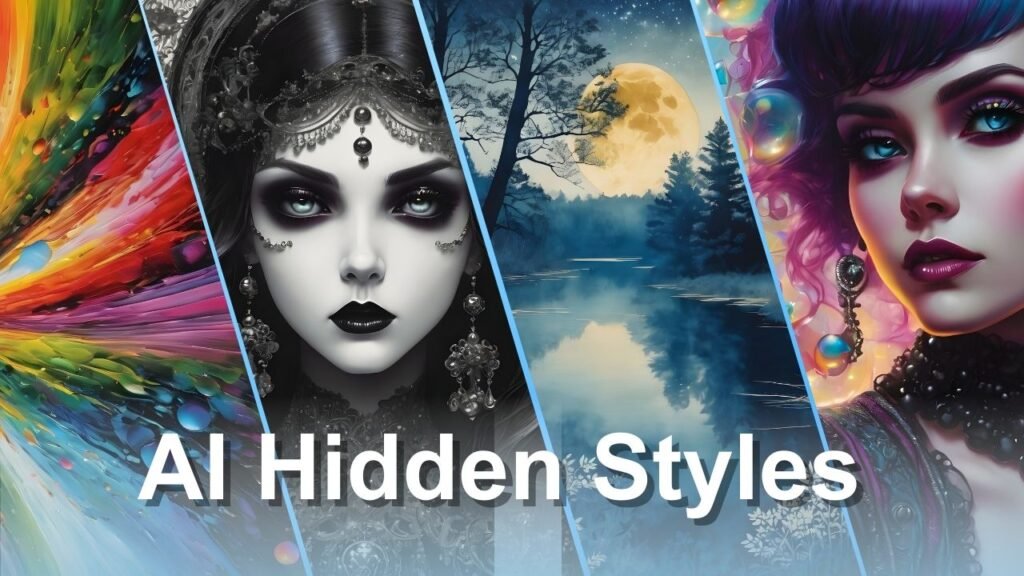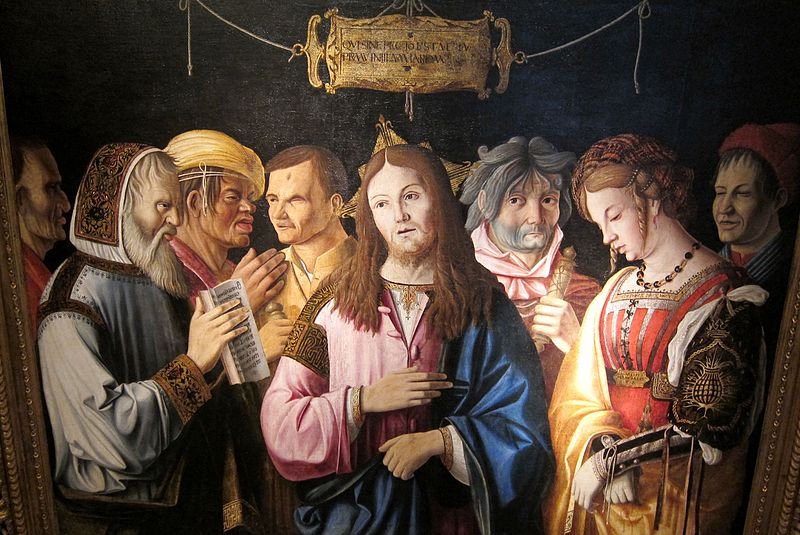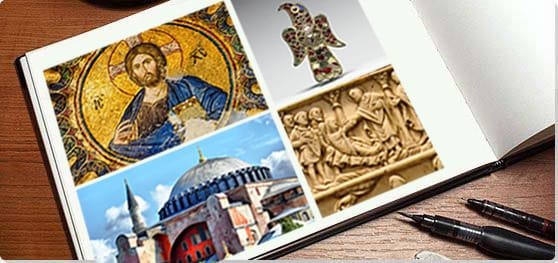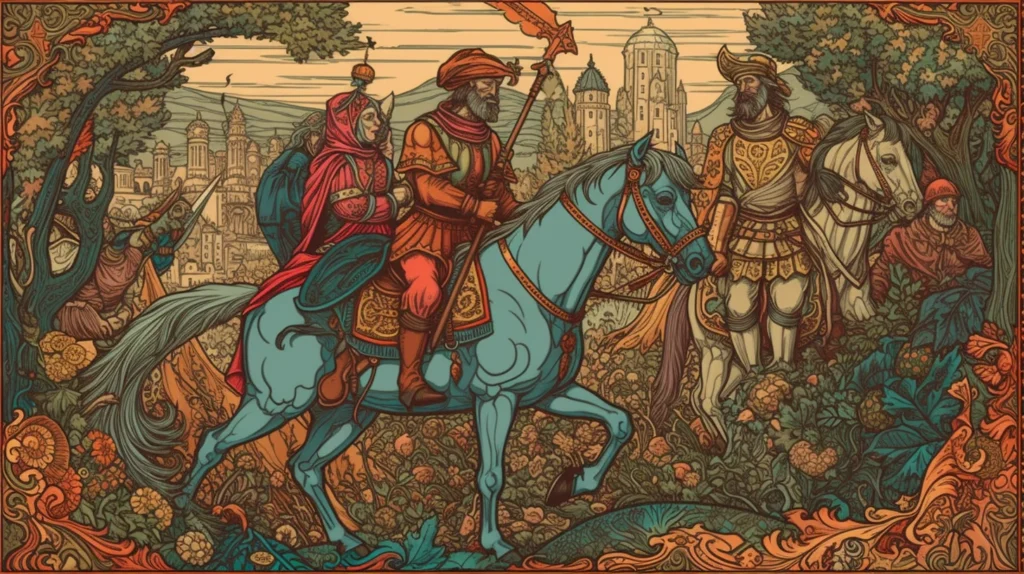Unveiling Medieval Art: A Midjourney Prompt to the Dark Ages

Introduction
The Unveiling Medieval Art is nobler than knights, castles, faded parchment. This is a visually rich, emotionally rich, a very deep, symbolic time. For the Midjourney AI creator, a natural leap to see this historic-looking aesthetic is an entire new level of storytelling. “Unveiling Medieval Art” is not a prompt but an invite to a mystery that is only alive through the digital lens.
Every detail in medieval art is filled with sacred symbolism and textured manuscripts. With the help of imagination, style and AI driven tools, the Dark Ages can be reimaged with superb clarity. That is your roadmap to achieving this. You’ll make the architecture of prompts, how how you can read the visual language of the time, and how to use artificial intelligence to bring your visions into being.
Now would be a good time to enter the medieval world of myths, faith, and artistry. This journey will make you a better crafter of epic scenes or design of a character.
Why “Unveiling Medieval Art” Matters
Unveiling Medieval Art is neither old nor fashioned, but it’s a foundation. It is also responsible for how we see past, culture and about storytelling. Unveil it with the help of AI and you link the past to the future.
Midjourney is an AI tool that allows you to combine the modern approach to creativity and the ancient style of… Still, you have to understand the why; otherwise, it’s pointless. Medieval art was by no means decorative, as it was symbolic, often spiritual, and always meant something.
This aesthetic helps the digital artists to generate the depth of a image, and not just design. Good prompts can send the viewer back in time. The purpose of this guide is to facilitate bridging centuries using words and vision.
Art, Imagining and AI Prompts Blend

This translator between human vision and the AI is the prompt. To describe medieval art is only a beginning; they have to evoke.
- Write in the genre of descriptive language that is rooted in medieval imagery.
- Increase the realism with imagination together for best effect.
- Try to think of stories and not elements.
- Only what you feed AI will it understand. Make your words count.
The Power of Visual Storytelling
In Unveiling Medieval Art times, the medieval artists told stories without words. All paintings or manuscripts carried belief, fear, or wonder.
- What your prompt should accomplish likewise:
- Focus on emotion and intention.
- Theme can be chivalry, faith or the plague.
- Feel in the scene to have been lived in and to be living.
Making the art compelling is not just about making it factually correct, but in fact, tổn coọnelling your art, nó thành một câu chuyện.
Decoding the Medieval Aesthetic

If you want to make Unveiling Medieval Art artworks authentically in their style, you need to learn the foundations of the medieval art. Rustic charm is just the beginning of the visual traits of the Dark Ages. They are all of religion, myth, politics, and cultural expression.
This section goes into building blocks so that your prompts can retrieve the essence, not just the look, of the era.
Traits of Dark Age Visuals
Medieval visual were not realistic but symbolic. Tendencies were added that exaggerated proportions to highlight spiritual importance.
Key traits include:
- Flat perspectives and frontal figures
- Halos and golden backgrounds in religious art
- Repetitive iconography (lions, crosses, dragons)
- It’s not about realism. It’s about conveying meaning.
Colors, Textures, and Symbols
Medieval art needed color. Red symbolized martyrdom. Blue reflected heaven. Gold meant divinity.
Textures and materials mattered too:
- Parchment and tempera for manuscripts
- Mosaics in Byzantine art
- Embossed metal in religious items
- To get rich results from your prompts use colors and material cues.
Building Prompts with Medieval Flair
Your prompt needs to speak the right language in order to capture the medieval vibe. This means crafting with intention of the history behind it.
What you say isn’t all—it’s the way you say it. Let’s break it down.
Structuring for Authenticity
So you should adopt the format of medieval compositions:
- Either with the subject, a knight, scribe, or saint.
- The action (praying, battling, writing) has been added.
- Atmos (cathedral glow) end with atmosphere (foggy woods)
- Example: “A candlelit chapel, with a noble knight kneeling, stained glass shadows on stone walls.”
Mood Words That Work
Tone is everything. Mood words give a feeling to your scene.
Try words like:
- “Somber,” “sacred,” or “celestial” for spiritual tones
- dark settings, ominous, dreary, ruined.
- For imagery of nobility or as an ornate, gilded or heraldic mark.
- Mood makes your prompt immersive.
Picking the Right Art Style

It is not all medieval art that was depicted. Styles differed from region to region and from century to century. Select a style that will match your concept to prompt accurately.
Style impresses itself on your image through Gothic spires, Romanesque archways.
Gothic, Romanesque, and Manuscripts
Gothic:
- Pointed arches
- High detail and verticality
- Often found in cathedral art
Romanesque:
- Rounded shapes
- Bold lines and colors
- Simplified figures
Illuminated Manuscripts:
- Miniature paintings
- Gold leaf accents
- Dense with iconography
This gives Midjourney a way to directly mention styles, in order to return the exact result.
Descriptions That Feel Real
Avoids the generic description of old art. Use real-world terms:
- “Limestone worn,” “frescoed dome,” “gilt scripture”
- Provide suitable references like that of “Bayeux Tapestry” or “Book of Kells”
- Draw anchor based in real world reality.
That brings us to the result, which is precision, and it results in better AI renderings.
Weaving in Myth and Symbolism

Medieval art was lifeblood in myth and symbolism. All of it was hidden with deeper meanings.
To learn this style, you need to put symbolism into your prompts.
Telling Stories with Themes
Until you include themes, your prompt will be nothing more than an image. Pick a focus:
- Love and loss
- Crusade and conquest
- Heaven and hell
Use characters and settings which correspond to the theme. Tell a story without words.
Balancing Fantasy and Fact
Things often overlap with fantasy and medieval ones. The key is balance.
Tips:
- Dragons and magic should be used sparsely for realism.
- Ground fantasy in historical elements
- Blend folklore with tangible visuals
- Half of what I want to convey is magic should seem like a myth, not a cartoon.
Midjourney Settings That Shine

The heart of your prompt is the output, but the settings determine how it will sound. Start learning how to set lighting, detail and stylization for medieval environments.
Your final image depends on these settings.
Lighting, Detail, and Stylization
Lighting:
- The ambiance: use ‘candlelight’, ‘twilight’, or ‘glowing ember.’
- Do not go for overly bright or modern light references
Detail:
- The texture of medieval art is oralate (not texted!), engaved, or aged.
Stylization:
- Give it go with ‘engraving style’, ‘woodcut’, or ‘tempera paint look’
- Use specific styles: Gothic illustration, tapestry style rendering.
Pro-Level Render Tips
Get advanced techniques to boost your images.
- Create some depth: “shallow contrast.” “soft blur background”
- Try angle cues:① “three quarter view,”② “birds eye perspective”
- Said surfaces: “stone altar”, “wooden table”, “velvet robe”
- Massive is the result of small tweaks.
Avoiding Common Prompt Fails
Not all prompts can be used. Some fall flat or feel off. In this case, let’s look at what to keep away from when sourcing songs for medieval style prompts.
What to Skip and Why
Avoid:
- Modern words like “sci-fi,” “photorealistic,” or “neon”
- Historical inaccuracies (e.g., guns or modern outfits)
- Overly vague phrases (“old style” or “ancient vibe”)
- Immersion is ruined by the wrong word. Stay era-accurate.
Staying Unique and Engaging
Generic prompts don’t stand out. Be bold and specific.
- Reference lesser-known saints or legends
- “Anglo Saxon monk” or “Carolingian scribe” all use the regional language.
- Note(s): “Gothic altar in a misty battlefield”
- Unbelievable prompts lead to unbelievable images.
Resources to Boost Your Prompts
Reference and tool to master the medieval prompts is the key to master the medieval prompts. In this section you are directed in the right path.
Archives and Art References
Explore these:
- The British Library Digital Manuscripts
- The Met’s Medieval Collection
- Europeana Art Archives
- Illuminated Manuscripts on Wikimedia Commons
These help you prompt with historical accuracy because each detailed section steers you perfectly back into the direction of the historical accuracy you expect.
Prompt Tools and Sites
Use tools like:
- Lexica.art (prompt inspiration)
- PromptHero (AI image examples)
- Pinterest (visual boards of medieval aesthetics)
- Both the research and the tools should be used together to achieve the best results.
Prompt Examples That Nail It
So let’s consider for examples that really bespeak of medieval energy … and why.
Prompt vs. Image Comparisons
Success: A sorrowful queen in a shadowed Gothic cathedral haloed by stained glass light and dressed in a gold-embroidered cloak.
Image Output:
- Captures emotion
- Strong lighting contrast
- Medieval texture in architecture
- Decompose it into tone, mood, structure.
What Makes Them Work
Effective prompts:
- Use emotional depth
- Combine setting with symbolism
- Stay consistent to style and historically true.
- The AI is guided by each prompt like a film director guides a film.
Wrapping Up Your Medieval Journey
Technology aside, there’s emotion to the act of exploration of medieval art by AI. The essence now is to unearth meaning, not mimic style.
Using this guide won’t just yield images. You are bringing life to the abandoned echoes of the past.
Future of AI and Historical Art
However, the deeper we tie ourselves to history, the faster the evolution of AI is occurring. Past and future will blur between the two.
AI does not replace history; on the contrary, it makes us interact with it in a totally new and fascinating way. Days will grow richer and prompts will become deeper.
Final Tips for Mastery
- Be specific, bold, and thematic
- Combine mood with structure
Other bands who charge huge sums for gigs want to play the same songs they’ve played a thousand times before, and perpetuate an excellent ‘history is your best co-creator’ debate.
Stay curious. Without saying much, let that next medieval masterpiece speak volumes.
Conclusion
A creative exercise to unveil medieval art through Midjourney is a bridge not just between centuries, but centuries in the digital sense. Through developing mastery in how to structure the prompt in a structure that works and has enhanced access to historical aesthetics, one becomes more than just an AI user, they are a digital storyteller.
Using this guide you have been taken through each element from Gothic arches to manuscript details. The idea here is to place each image into that lost artifact frame, not slowly rendered by an AI. With authenticity your presence is built in; your matter. Tips of spark in emotion, memory and imagination.
In many ways, understanding of the past determines the future of AI generated art. Keep going through archives, and symbols, and improve your prompts. The right words combined with a setting can recreate the medieval world, as it would have been—frame by frame.







